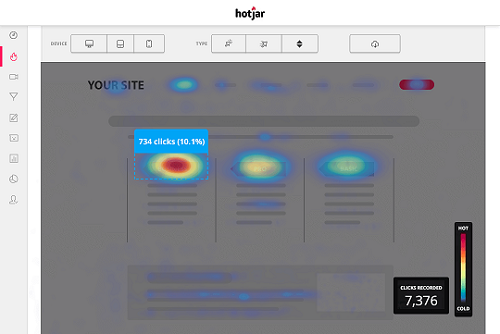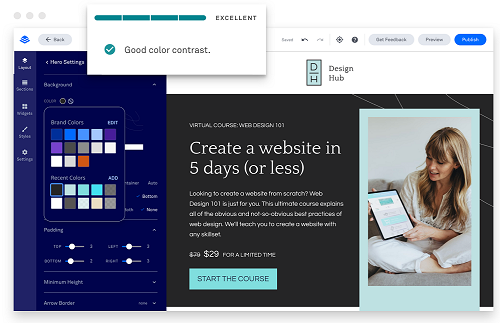The Rise Of Campaign Groups & How Brands Can Use The Same Strategy To Succeed
Our current social, political and
economic climate has created the perfect breeding ground for campaign groups to
thrive. This includes the likes of Black Lives Matter, grassroots vegan groups
and trans-positive movements, to name a few.
But what can brands learn from their
success? Whether it's creating noise, encouraging change or shifting
perceptions – Jellyfish Training’s social media trainer Kineta Kelsall
shares her advice on how brands can follow suit.
- Stay true to who you are
The thing that often sets these campaign
groups apart from brands is that they truly know who they are, and have a firm
identity.
It can be tempting when you see
challenger brands come into your space, to abandon who you are and try and
emulate them – especially if they’re successfully disrupting the market. Yes,
you need to keep up in terms of technology, etc., but remember to trust your
heritage and what makes you different.
Greggs is a great example of this. They
operate in a highly competitive space, where new artisan coffee shops and cafes
are popping up constantly. But what’s great about Greggs is they know who they
are – they create tasty sausage rolls which are fresh every morning, at an
affordable price. Their identity hasn’t waived, despite the newcomers.
The lesson? Stay true to who you are, and
don’t be too quick to change.
- Build a community
Cultivating a community is key to the success of campaign groups. It’s all about bringing people together in a way
that sometimes isn’t possible offline – whether that’s because people don’t
know the group exists or they feel less comfortable talking about the subject
matter in person.
Brands can learn a lot from this about
how to create communities. Whether you use Facebook groups and forums or other
tactics, the main aim here is to make your audience feel like they’re part of
something, and that they’re not alone.
- Listen and respond
When you look at successful campaign
groups, one common theme you’ll find is that they regularly ask people what
they think about the subject matter. This is vital to understanding how your
audience thinks and feels, because only then can you respond appropriately.
Ultimately, understanding cultural
relevance is key to getting this right. Brands need to find their place within
the market they operate in, and this starts with listening. When you can sense
the tone and sentiment of a conversation, you can mirror this in your response.
Social listening and audience intelligence tools can help here.
- Challenge your audience
What campaign groups do very well is they
create a lot of noise, but not in an aggressive way. Instead, they challenge
people – encouraging them to think for themselves and come to their own
decision about the subject matter. It’s not about saying “you’re wrong” or “you
should do this” – it’s about taking your audience on a journey and educating
them along the way so that they can make up their own minds.
We’ve all seen the brands who
aggressively sell at their audience, rather than think about what people want
to hear, or what value they can add to the conversation. Instead, find a better
way to communicate with your audience – whether that’s challenging,
entertaining, educating, informing or inspiring them. Get this right, and
you’ll generate intrigue, which will lead to meaningful engagement.
- Be authentic
Great campaigns work because they’re
authentic. They’re not hiding behind filters or pretending to be something
they’re not.
From a brand perspective, this type of
transparency is vital – especially if you want to cut through a crowded space.
Instead of pumping out messages about how great your product is or how
affordable you are, think about how you’re communicating with your audience.
There’s a huge amount of authenticity and power that comes from saying,
“Actually, we’re not the cheapest brand out there, but this is what we’re
great”.
This also means not being afraid to hold
your hands up when things go wrong. Campaign groups know that being honest when
things haven’t worked is key to building trust.
- Know when not to speak
Where brands often fall down is that they
try and say too much – particularly in a space where they shouldn’t necessarily
be doing so. For example, some businesses piggy-back off the success of LGBTQ
movements because they feel like they can or should, rather than because they
have something to contribute to the conversation.
Of course, every business should have a
strategy in place for diversity, but that doesn’t mean you need to create a
campaign for Pride every year, just because everyone else is.
If the synergy between your brand and the
cause you’re trying to support doesn’t fully make sense to you, your audience
will notice, too. At best, it will feel meaningless, but at worst, it could
damage your reputation.
- Remember your tone of voice
Whether you’re a campaign group, brand or
individual – having a clear, consistent tone of voice is vital when it comes to
encouraging engagement.
This is something campaign groups do
really well. They have one cause, know what action they need to take and then
take it. This sense of purpose runs through all their communication –
regardless of the channel.
Defining your brand identity and tone of
voice will mean your audience can get to know you and what you stand for, which
will improve their impression of and experience with you as a brand.
- Think about your delivery
Don’t forget to consider your in-platform
tactics and execution. For example, there’s a reason campaign groups tend to
favour video. With words – whether it’s a tweet or a Facebook post – the
original meaning you wanted to get across might get lost, or misread. But if
you have someone on-camera speaking, your audience will be more likely to
understand the sentiment and message you’re trying to convey.
As always with your social campaigns,
it’s important to think about the purpose of each platform and how it can help
you achieve your objectives.
For example, Instagram is an engagement
powerhouse, making it perfect for immersive and inspirational content. This is
why campaign groups use it to normalise speech, create movements and build
communities.
On the other hand, Twitter is a hotbed
for the new and exciting. So it’s a great place to get closer to your audience
by being reactive, supportive and connected.
Kineta Kelsall
A global Social Media Trainer passionate about the
psychology behind online human interactions. Responsible for training
businesses on paid and organic strategies across the big six platforms -
Facebook, Instagram, Twitter, LinkedIn, Pinterest and Snapchat.
The Rise Of Campaign Groups & How Brands Can Use The Same Strategy To Succeed
 Reviewed by Mili Ponce
on
Thursday, March 26, 2020
Rating:
Reviewed by Mili Ponce
on
Thursday, March 26, 2020
Rating:
 Reviewed by Mili Ponce
on
Thursday, March 26, 2020
Rating:
Reviewed by Mili Ponce
on
Thursday, March 26, 2020
Rating:















 Entrepreneur, international speaker on Social Media Marketing. First one in the UK to write and speak in conferences about Twitter as a marketing tool. Consultant to Corporate Companies, Government Organizations, Marketing Managers and Business Owners.
Entrepreneur, international speaker on Social Media Marketing. First one in the UK to write and speak in conferences about Twitter as a marketing tool. Consultant to Corporate Companies, Government Organizations, Marketing Managers and Business Owners. Aspiring novelist with a passion for fantasy and crime thrillers. He hopes to one day drop that 'aspiring' prefix. He started as a writer and soon after he was made Executive Editor and Manager of the team at Social Songbird. A position he held for 5 years.
Aspiring novelist with a passion for fantasy and crime thrillers. He hopes to one day drop that 'aspiring' prefix. He started as a writer and soon after he was made Executive Editor and Manager of the team at Social Songbird. A position he held for 5 years. Musician, audio technician, professional tutor and a Cambridge university English student. Interested in writing, politics and obsessed with reading.
Musician, audio technician, professional tutor and a Cambridge university English student. Interested in writing, politics and obsessed with reading. Recently graduated with a BA in English Literature from the University of Exeter, and he is about to study an MA in Journalism at the University of Sheffield. He is an aspiring journalist and novelist; in his free time he enjoys playing chess, listening to music and taking long walks through nature.
Recently graduated with a BA in English Literature from the University of Exeter, and he is about to study an MA in Journalism at the University of Sheffield. He is an aspiring journalist and novelist; in his free time he enjoys playing chess, listening to music and taking long walks through nature. Lucy is an undergraduate BSc Politics and International Relations student at the London School of Economics and Political Science.
Lucy is an undergraduate BSc Politics and International Relations student at the London School of Economics and Political Science. Anna Coopey is a 4th year UG student in Classics at the University of St Andrews in Scotland. She is a keen writer and researcher on a number of topics, varying from Modern Greek literature to revolutionary theory.
Anna Coopey is a 4th year UG student in Classics at the University of St Andrews in Scotland. She is a keen writer and researcher on a number of topics, varying from Modern Greek literature to revolutionary theory.
